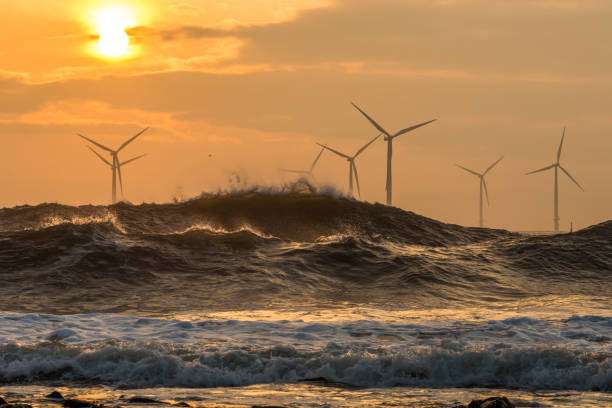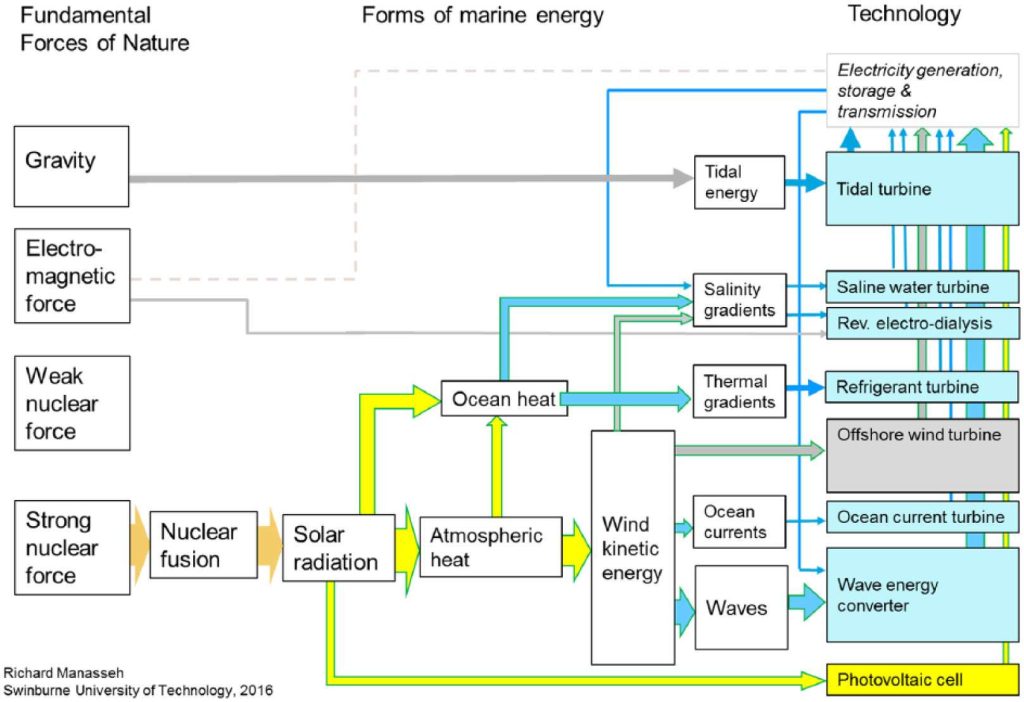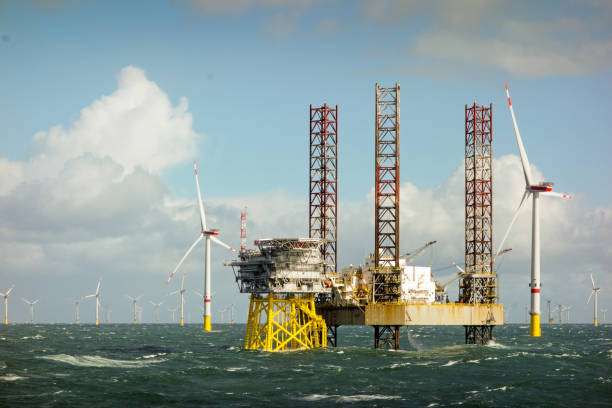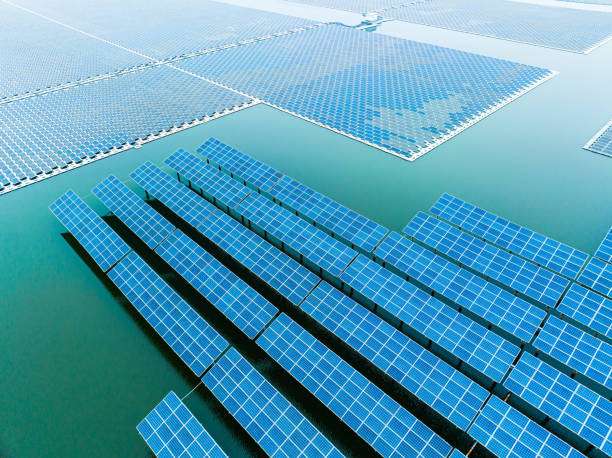Around the world, coastal communities increasingly require sustainable energy solutions to address their expanding power demands. With traditional energy sources lagging due to environmental concerns and diminishing resources, attention shifts towards alternative energy sources. One promising avenue is marine energy, which uses ocean resources to generate power.

Source: iStock
What is Marine Energy?
Marine energy, often referred to as ocean energy, consists of various marine energy resources harnessed to generate electricity. The main types of marine technologies include:
- Tidal Energy: The rise and fall of Earth’s tides produce tidal energy. Tidal barrages, turbines, and fences are various ways of harnessing tidal energy.
- Wave Energy: Wave energy is generated by converting the energy within ocean waves into electricity. Devices like wave energy converters or oscillating water columns capture the kinetic energy of waves. Then, the devices convert it to energy for electricity generation or water desalination.
- Ocean Thermal Energy Conversion (OTEC): OTEC systems harness the temperature difference between the warm surface water and the cold deep water in the ocean to generate electricity. This technology depends on the natural temperature gradient of the ocean.
- Ocean Currents Energy: Harvesting ocean current energy is most effective in locations between islands, along heavily indented coasts with strong tidal currents, or where the temperature difference between warm surface water and cold deep water is approximately 20°C or more.
- Salinity Gradient Energy: Here, the difference in salinity (salt levels) between seawater and freshwater can be used to generate energy through processes like pressure retarded osmosis (PRO) or reverse electrodialysis (RED).

Marine resources are expected to generate 1,250 to 1,850 terawatt-hours of electricity per year from river currents and the ocean’s wave, current, and tidal energy. Coastal communities stand to significantly benefit from harnessing these marine resources. Interestingly, nations such as Canada, the United States, South Korea, Indonesia, China, and some European countries are investing in tidal and wave energy. Similarly, France, South Korea, and Australia have several innovative wave and tidal energy technologies.
Challenges
The following are drawbacks to the use of marine energy:
- High costs: Due to high installation, operating, and maintenance costs, marine energy solutions are often costlier than other renewable energy sources. This makes it more difficult to get investors and insurance. Adequate funding and financing are crucial to addressing this issue. An early examination of insurance requirements, underwriting standards, and some sense of past and projected carrier loss experience might improve the economic viability of marine energy solutions.
- Infrastructure: Marine energy technologies face significant infrastructure challenges and underdeveloped supply chains. So, effective communication that emphasises the benefits and risks of marine energy and addresses the concerns and expectations of the stakeholders is needed. Likewise, incentives such as subsidies, tariffs, quotas, and tax credits will increase the acceptance of marine energy in local communities.
- Regulatory challenges: Management of ocean and coastal activities involves multiple federal and state authorities. The resulting regulatory process can be lengthy and expensive. Engagement with the relevant stakeholders, such as environmental groups, local communities, and regulators, before, during, and after the development of marine projects is necessary to ensure transparency and accountability.
- Environmental effects: The main environmental risks of ocean energy technologies include the collision of marine life with underwater turbines, the creation of underwater sound, and habitat changes. To address this challenge, communities must conduct comprehensive environmental assessments and monitoring before, during, and after the deployment of marine energy devices and systems. Precautionary and adaptive management principles, as well as the best available scientific knowledge and practices, are needed to minimise and mitigate environmental impacts.
moving forward
In summary, utilising marine energy to power coastal communities presents opportunities and challenges. Prioritising marine energy technologies such as tidal, wave, wind, and ocean thermal can offer sustainable energy. Furthermore, it promotes coastal development and job creation. Realising the full potential of marine energy requires innovation and concerted efforts from government, industry, academia, and communities to invest in the research, development, and deployment of marine energy technologies.

Why is it essential that we focus on How Marine Energy Provides Power To Coastal Communities?
First, marine energy powers microgrids in remote coastal or island areas to respond to their homes and business needs. Second, violent storms can delay or even prevent the fuel from reaching its destination, leaving coastal communities in the dark. Marine energy offers renewable and abundant power to communities with coastal proximity, reducing reliance on finite fossil fuels and mitigating climate change. Third, the marine energy sector holds great potential to sustainably drive economic growth, job creation, and energy security. For instance, nations such as India and Australia have significant marine energy resources. Indeed, these fulfil the spectrum of needs for coastal communities.
Innovative actions must be taken to improve marine energy technology’s efficiency, reliability, scalability, and sustainability. Moreover, this will help to improve industry competitiveness and de-risk investments in marine energy. It also strengthens the development of the blue economy, which is worth multi-trillions of dollars and has a growth rate twice as high as the rest of the global economy.

Source: iStock
achieving the United Nations Sustainable Development Goals (SDGs) and how they link to Marine Energy And Coastal Communities
The United Nations Sustainable Development Goals (SDGs) provide a framework for addressing global challenges and fostering sustainable development. Harnessing marine resources to power coastal communities offers a unique opportunity to advance multiple SDGs.
Harnessing the abundant marine energy embodied in ocean waves, tides, and winds will not only create a more resilient and sustainable energy future (SDG7), but it will also foster innovation, create new industries, and contribute to significant economic growth in countries with large coastlines (SDG8 and SDG9). By tapping into marine renewable energy, communities will reduce global carbon emissions from fossil fuels by 500 million tons by 2050 (SDG13). Moreover, marine energy contributes to SDG14 by promoting the sustainable use of ocean resources, and SDG17 by fostering international collaboration in sustainable energy development.
A Thrivable Framework
THRIVE conducts research, advocacy, and education on sustainability issues. Through the THRIVE Framework, we apply a holistic and systemic model. This helps us measure sustainability performance and create a better world.
The THRIVE Framework examines issues and evaluates potential solutions to climate change. Transitioning to renewable energy enables humanity to slow down, stop, and eventually reverse climate change. By harnessing marine resources, we can actively create a more resilient and sustainable energy future for all.
To learn more about The THRIVE Project, visit our website. THRIVE has its own set of publications as a guide for anyone wanting to run or support sustainable business practices. You can follow our informative, diverse blog and podcast series, and learn more about our regular live webinars. Sign up for our newsletter to receive regular updates.























